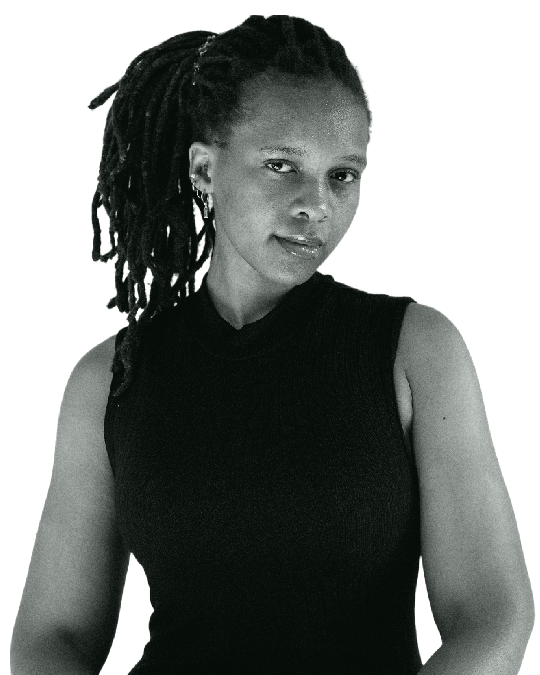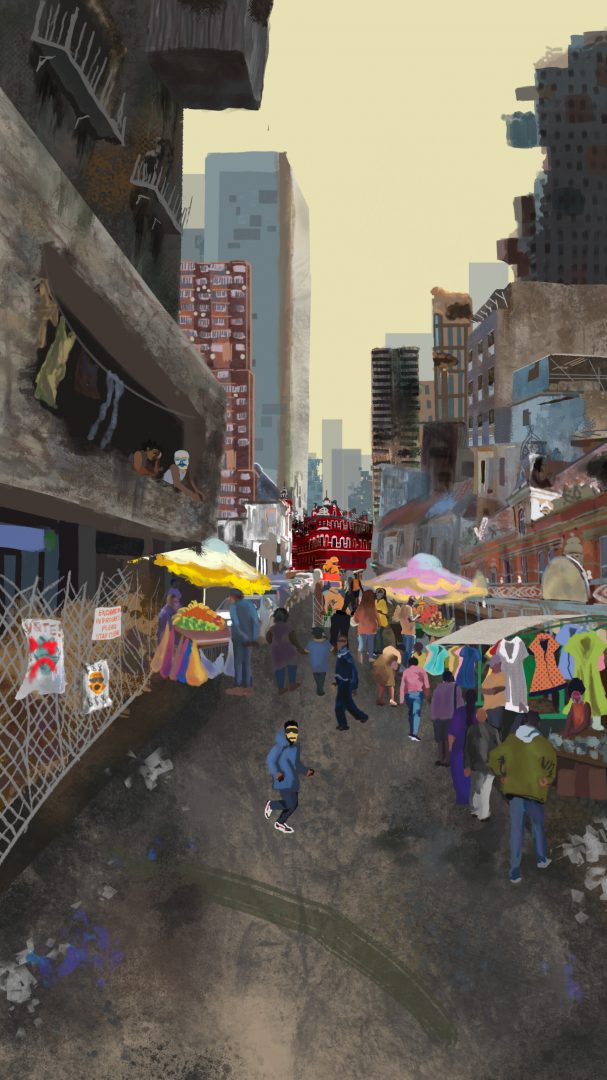DIGITAL ARTIST
MPHO JACOBS


PRESENTATION OF THE ARTIST
The artworks of South African painter and digital artist Mpho Jacobs illustrate her emotional experiences, incorporating realism with symbolic motifs and her learning of art history over the years.
Mpho Jacobs’ artistic vision is inspired by the contrast between her place of origin (Pietermaritzburg) and her place of study (Stellenbosch).
Following her move to a new place, run by a different political party and with a different racial demographic, her work speaks of these contrasts.
What would happen if clean natural spaces were only accessible to a particular class?
His work focuses on the ‘megacity’, which represents the growing gap between rich and poor in the South African context and on the continent in general, forming two different worlds within the same world.
THE PIECES CREATED
DURING THE “MBEDD MI MBEDDUM BUUR LA” RESIDENCE
Church Street, Pietermaritzburg, 2050
This artwork reflects my envisioning of how my hometown, Pietermaritzburg would look in 2050.
Church Street in Pietermaritzburg is the central “heart” of the town. It is also one of the streets constantly reminisced about looking neater and better during apartheid than it does now, on the brink of slowly eroding. It is a street now often not well maintained, and during the 2021 lootings at Pietermaritzburg, old architecture faced burning and demolishment that can still be seen today. It is clear that with the current municipal rule of the town, it might continue to erode.
My envisioning for 2050 is this area still contains some of the old architectural buildings, but also other structures erupted for accommodation as overpopulation occurs and more people live in the city.
New structures are built on top of old buildings, some informal, and makeshift balconies through the hacking of walls become the way citizens view the scenery.
Citizens often wear masks outside, as a form of filter for the pollution affecting the air, a consequence of the factory town Pietermaritzburg has often been.
Street vendors line the road, while people meander, window shopping and going about their day.
Victoria Street, Stellenbosch, 2050.
This artwork reflects my envisioning of how the town where I study, Stellenbosch would look in 2050.
Victoria Street is one of the main streets of Stellenbosch, mostly because of its connection to the open Stellenbosch University campus, residences and main town.
This street is also known for being lined with oak trees, making it leisurely to walk in during the summer months. Stellenbosch’s main areas are quite well maintained by the ruling party of their municipality, but it is criticised that the well-maintained areas are those connected to the university, tourism and the affluent white population that mostly resides in Stellenbosch.
Township areas where the population is mostly non-white, still have issues with service delivery. Being situated in the Western Cape, dubbed the province that feels like a different country within South Africa, I depict in the future, this place being one that is solely exclusive to the white, affluent population.
This would be also because of Stellenbosch’s history and strong ties to white Afrikaner culture, and that there would be almost a ‘return’ and strengthening, a real bubble formed within the town, excluding those who do not fit into their bubble.
The seeking of the past comes in the Cape Dutch Architecture houses lining the street. As much as the town deals with overpopulation by bringing more suburbs into the main street.


